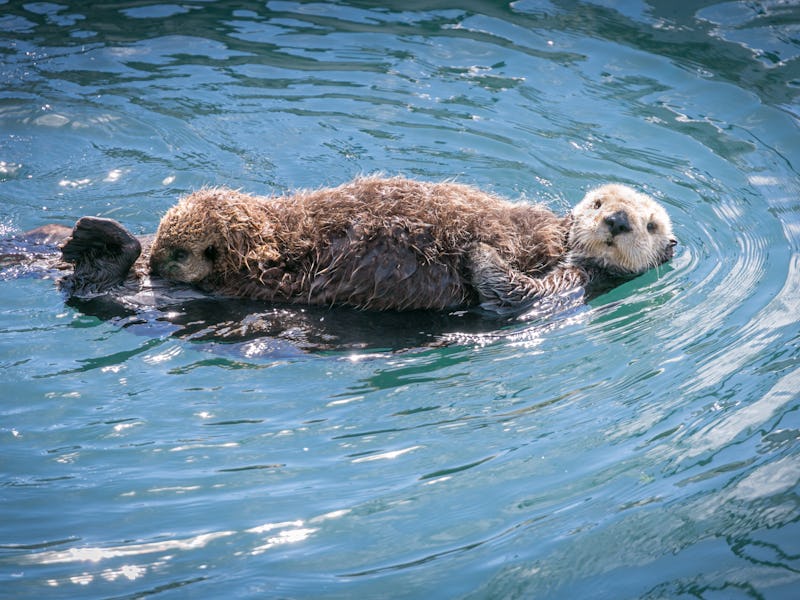Sea otters are cute as heck, but they have an even more important quality
In case you needed another reason to love these hand-holding marine mammals.

Rescue and rehabilitation of stranded or injured wild animals is one tool at our disposal to protect endangered or threatened species, and in the U.S. it has helped conserve marine animals like the Hawaiian monk seal and Florida manatees. Zoos and aquariums substantially contribute to these efforts.
New research out of the Monterey Bay Aquarium, published in the journal Oryx, highlights just how important — not to mention downright adorable — this work can be.
Sea otters are called “keystone” species, meaning that they are the linchpin that holds their ecosystem’s food web together. A long-running line of ecological research has found that when sea otters are present in coastal ecosystems, populations of sea urchins (one of their favorite foods) are kept in check, allowing marine kelp forests to proliferate. This is a balanced, healthy coastal ecosystem. But when sea otters disappear, sea urchin numbers explode, they eat all the kelp, and the coast starts to look pretty bleak.
This story originally appeared on Massive Science, an editorial partner site that publishes science stories by scientists. Subscribe to their newsletter to get even more science sent straight to you.
Sea otter populations are still recovering from the effects of hunting for the fur trade in the 18th and 19th centuries, and their protection remains an important objective for California’s Monterey Bay Aquarium. Between 2002 and 2015, a team of aquarium scientists, led by Karl Mayer, rescued 37 stranded and orphaned sea otter pups along the coast. They brought them back to the aquarium and gave them to captive female otters to raise as their own. After the pups were weaned, they were released into the Elkhorn Slough wetland, an estuary that is managed by state and federal natural resource agencies. This in itself was a great success, but Mayer and his team wondered about the fate of these released pups and how much they contributed to their newly adopted wild population — an important mark of how successful the aquarium’s rehabilitation and reintroduction project truly is.
They found that released female otters reproduced at the same rate as fully wild otters, an encouraging sign that reintroduction can contribute to a healthy wild sea otter population. In fact, over the lifetime of their study, the reintroduced females and their own wild pups accounted for 55% of the growth of the Elkhorn Slough sea otter population! This is fantastic news for California’s sea otters, and shows how captive animals can contribute to conservation of their wild counterparts.
You probably didn’t need another reason to love sea otters, with their hilarious old-man whiskers and their penchant for hand-holding, but let’s add this conservation triumph to the list, anyway.